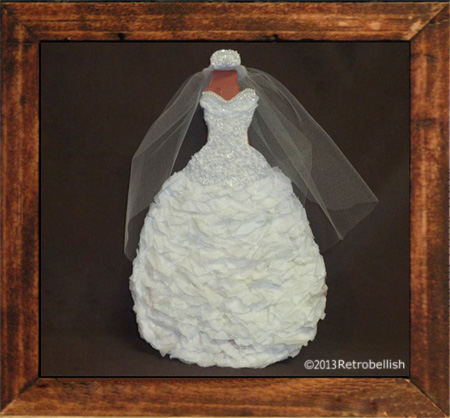Lawnmower Wheel Decor
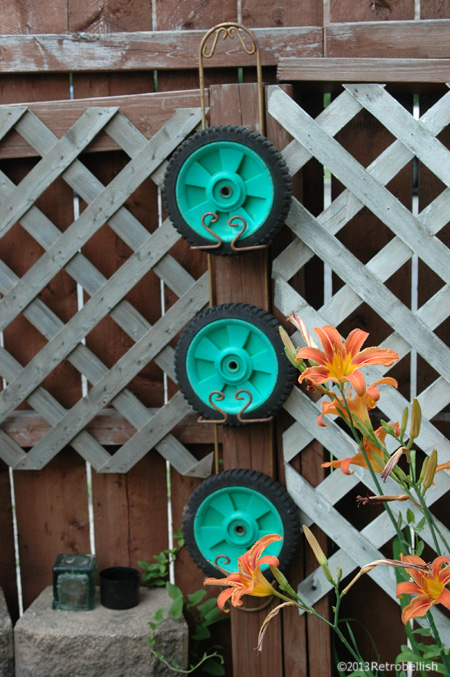
This piece was made from three wheels from an old lawnmower and a old decorative plate holder. It adds color and charm to the yard. This time around we could only reclaim a few items from this old lawn mower.
Recycled Lamp Planter
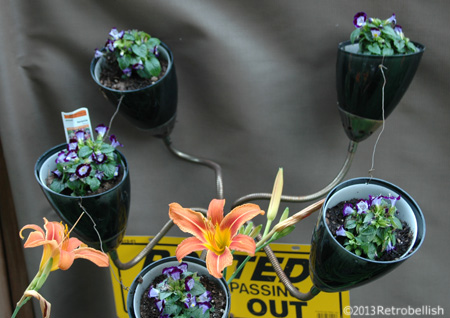
This recycled lamp planter was a trash find. We removed the stand from the top of the lamp and used it as a stand for my clothing projects. We then used the top of the lamp as a planter for small plants. The blue tube base is from a recycled piece of chain link fencing. The no trespassing sign we had lying around for many years. All combined, this piece adds a little whimsy to our yard.
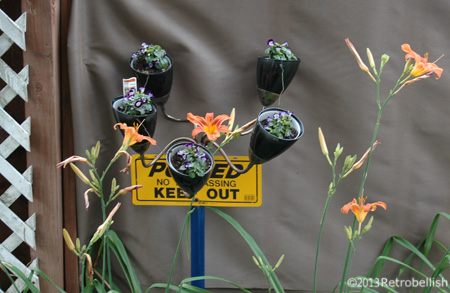
Reclaimed Plastic Frame Art
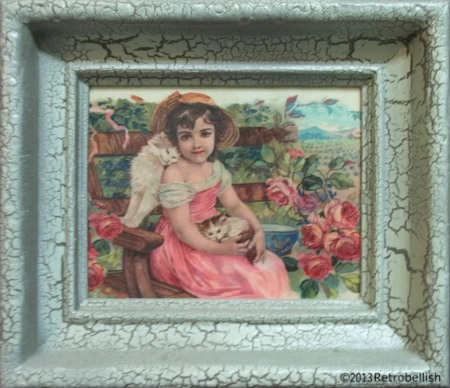
About ten years ago, we bought about eight plastic frames at a local surplus science store. These hard plastic frames were perfect in size to hold a 5″ x 7″ picture or other projects that I could use them in when crafting. We used some of them to hold some family pictures and had some left for crafting. This Project started from a CD we had purchased of vintage Victorian labels that we could print out for various craft projects.
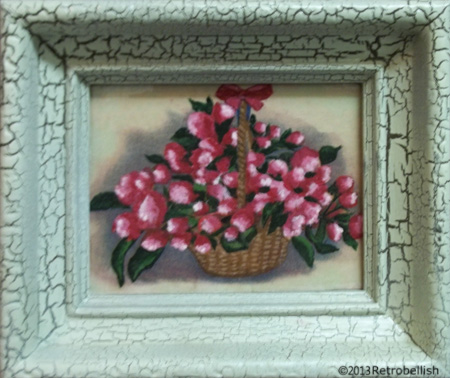
We painted the frames in three different colors, black, cream and gray with a crackle finish. The two featured here were crackled with a kit from a craft store. I printed out a few labels that I really loved. But since they are from a vintage collection the colors were very faded, so I decided to paint in some of the highlights in the prints to brighten the colors and enhance the overall look. I used craft acrylic paints and the results were amazing on the first one, so I decided to enhance the second one the same way. After the prints were dry, I used Mod Podge on them to protect and preserve the colors. I used the gloss Mod Podge to give the pieces a more vibrant look.
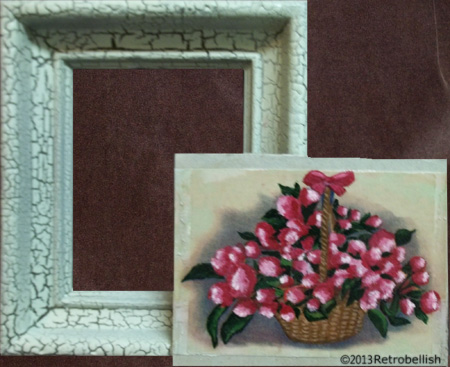
I had some pieces of museum art boards (sturdy cardboard) that I had bought in a frame shop. The shop would sell their leftover art board remnants in many shapes and sizes in plastic bags. I decided to glue these prints onto the museum art boards by using Mod Podge on the backside of these prints, but you can use any kind of sturdy cardboard that you may have handy.
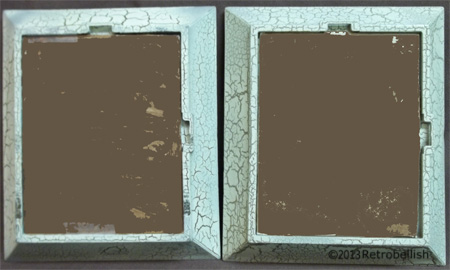
Although we used this type of frame and medium for this project, there are so many fun prints you can use. Just have fun and create your own.
Mache Forest Maiden Mask
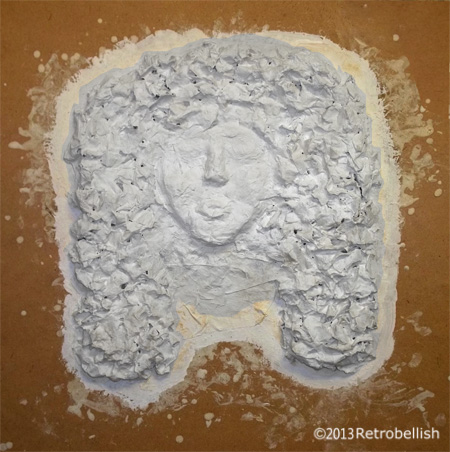
Paper Mache Forest Maiden Mask
In the past, I’ve often made small paper mache items, but some of my favorite pieces I’ve had the most fun with are the small masks. I’ve always wanted to try making a larger version paper mache mask. I thought about the many different style masks I’ve seen in the past. I had fun drawing several rough sketches and finally decided to try making a mask that looked like a forest maiden with leaves for hair.
I found a large piece of Masonite board in the garage that I thought was the perfect size base for my mask. I dusted off the board and wiped it clean. I then gathered a stack of old newspapers and started tearing up sheets into medium size pieces (about 2 to 4 inch pieces). I continued until I had a large pile of torn up newspaper pieces. I then made the paper mache paste using flour and water – with a dash of salt as a preservative.
I took some of the larger newspaper pieces and started soaking them into the paste mixture. I then started the mask with the face by placing some of the bigger soaked chunks down on the board. Once I started forming the face, I started to place smaller soaked pieces on top of the base pieces by laying them on as smoothly as possible.
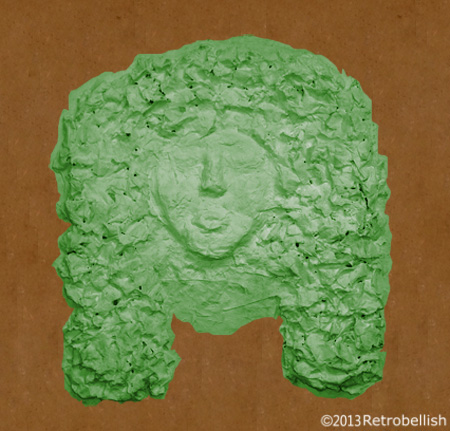
Once I had something resembling a pleasing shape of a face, I worked on building up the forehead, the eyebrow areas and then the cheek bones. I rolled and soaked several torn pieces together and placed those large soaked pieces in the area where the nose would go and then did the same with the mouth. I decided to make her mouth open as if she was whispering to nature. While the face was drying, I worked on the hair, which I tried as closely as possible to resemble leaves. I had to let the basic parts of the mask dry before adding on additional layers over certain parts of the face and hair. It is an abstract piece and once I felt it was done, I was very pleased with the entire piece because I was able to make it look closely to what I had imagined.
I had started this mask project on a weekend and after the base layers dried for several days, I waited until the next weekend to add the final layers that needed to be built up. Once, I knew the mask was completely dry, I painted a coat of gesso on the entire piece. I let the gesso coat dry overnight. I then painted a base green color over the entire piece on which I will add to at a later date. I really enjoyed making this mask, and although I used old newspapers, you can always use magazines or scrap paper of any kind to make this project.
Reclaimed Paper Wedding Dress
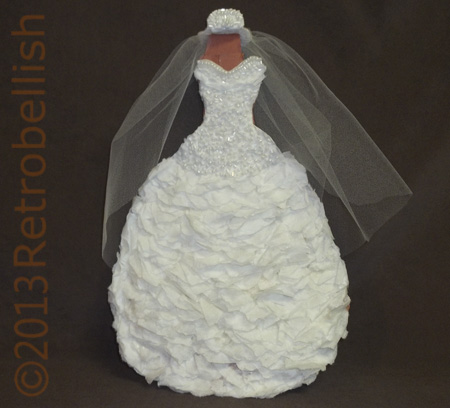
This was a very simple and fun project that started out with some coffee filters that had gotten wet in soapy water. Not wanting to throw away the filters, I set them out to dry and then stored them for a future project. Although this happened a few years ago, I saved them and they were still in good shape. I have been crafting with recycled manila folders for a long time because this sturdy cardboard lends itself to a lot of recycled craft projects. While cutting out a doll form for another project, I got the crazy idea to use the coffee filters as a combination of collage and paper mache.
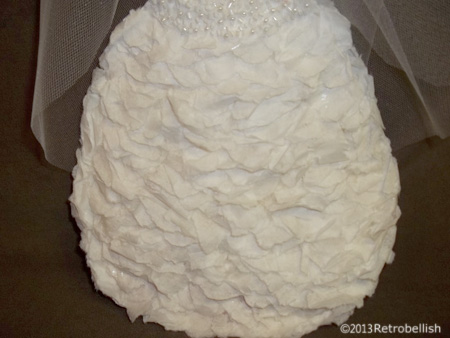
The soft fluffy feel of the coffee filter gave me an idea. I decided to tear up little thumb-nail size pieces, gluing only a tiny edge of the torn piece to the cardboard dress form, and leaving the rest of the torn fluffy piece hanging freely on the cardboard. When gluing the torn rough-edged pieces very close together, the overall look of the rows started to look like light fabric ruffles on a dress.
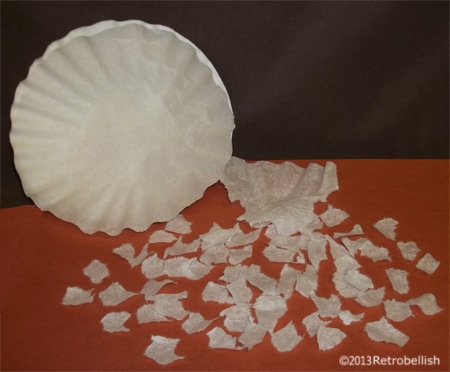
I then decided to stop at a certain point and glue beads to the top part of the dress. I traced the top part of the cardboard form onto plain paper and cut out that paper shape. I drew different designs and held them up against the top row of ruffles until I found one I really liked. I then glued bigger filter pieces to the top part and all the way down to the dress hip area as a base on which to glue on the white beads. I glued the white beads following the drawn design and was happy to see the beads were staying in place, and better yet, I didn’t have to sew on each bead, (although I love hand sewing ) .
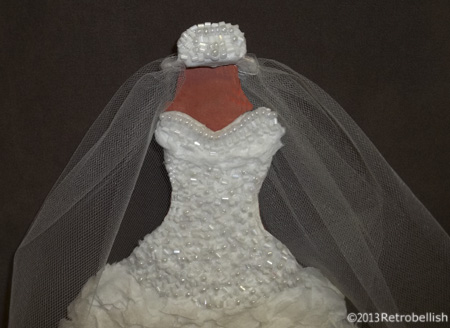
The simple veil was made from two small pieces cut from the same cardboard manila folder. I cut out a one inch oval shape, poked a hole in the center of the oval shape and cut out an opening leaving a 1/4 inch ring. I then folded one (shorter) edge of the oval shape forming it into an L shape. I then cut out a smaller oval shape from the cardboard and cut (about 1/8 inch) from the bottom edge (of the longer side of the oval shape). I then glued the smaller oval shape (straight edge down) to the larger oval shape making sure the flat side of the L shape was lined up against the straight edge of the smaller oval shape. I cut small coffee filter pieces and glued them entirely over the brown of the cardboard veil. I then glued on the same white beads to the front of the veil in a pretty pattern. I cut out a piece of white tuling I had in my remnants box, basted one edge and trimmed a complimentary shape by placing it near the dress, and then sewed the basted edge around the back opening of the cardboard veil. For picture purposes, I displayed the veil near the dress by taping a small piece of cardboard behind the dress neckline.
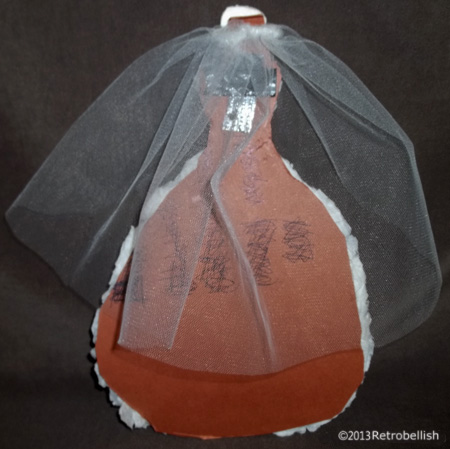
The frame we used for this project was made from recycled pieces of wood leftover from other projects and stained with a dark brown latex stain. Although I reused coffee filters, recycled manila folders and embellishments, one can make this project using any kind of paper and cardboard. This also makes a great project to work on with family and friends. So always remember to just have fun and create your very own piece of art.
